I feel a little bit bad about Canyon de Chelly, but after seeing Mesa Verde and Monument Valley - and having it near the end of my vacation I just wasn't super impressed with this stop. I also chose to do the rim auto tours instead of hiring a Navajo guide to visit the canyon floor.
This sign did make me laugh, though...
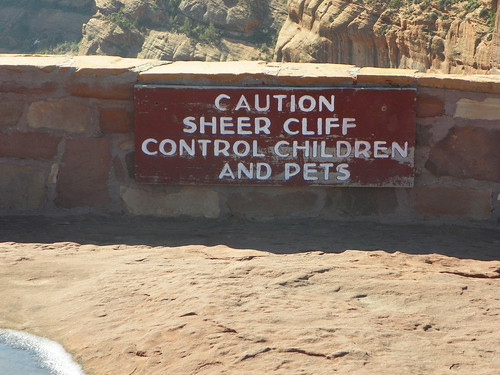
Antelope House Overlook:
Navajo Fortress - historic landmark used as a Navajo refuge. "Stairways" of movable, notched poles were used to reach inaccessible areas.
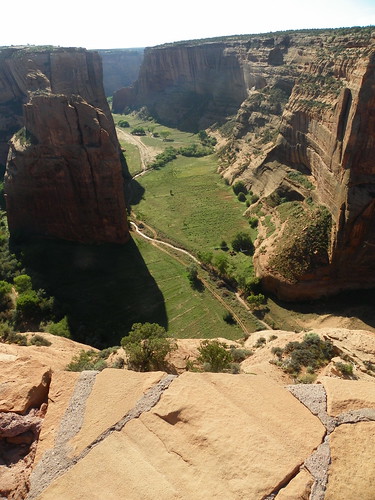
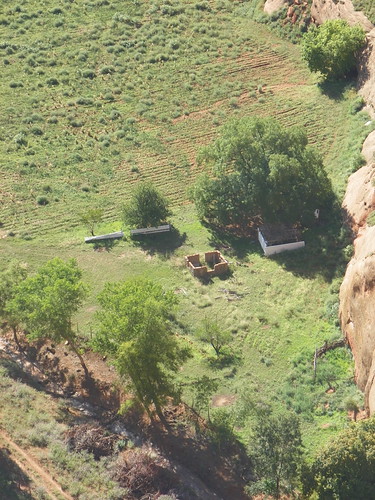
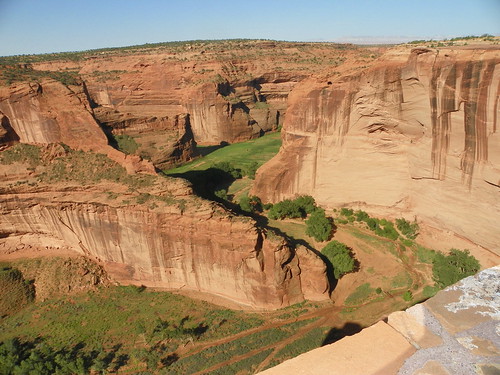
Antelope House Ruin - is named for the illustrations of antelope attributed to Navajo artist Dibe Yazhi who lived here in the early 1880s. The circular plaza was built in the 1300s.
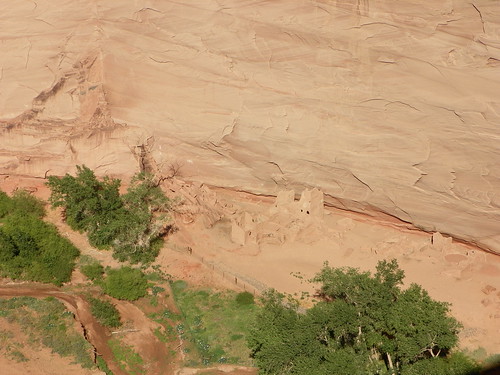
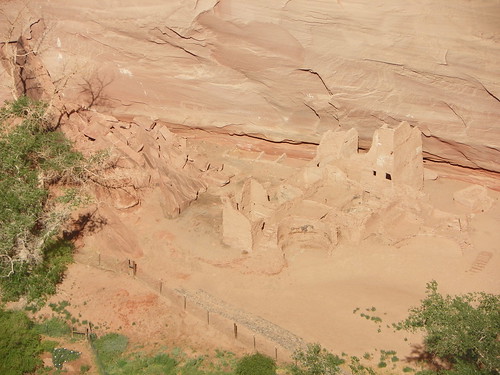
There was about a quarter mile hike from the parking lot to the overlook. Most of it looked like this:
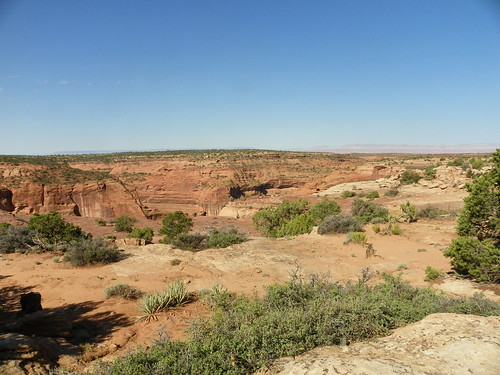
so you had to stop about every 5 steps and reassess which direction you were headed.
Part of the "trail" had little yellow feet painted into random rocks:
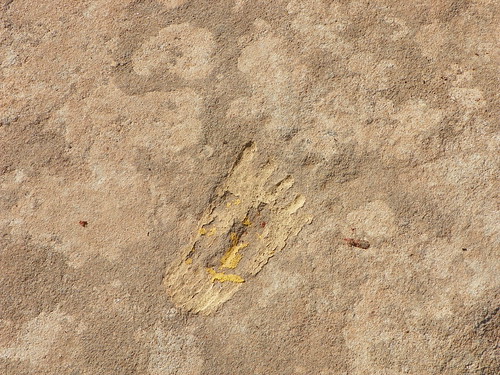
And part of the trail had these rocks set up to gently nudge you in the right direction:
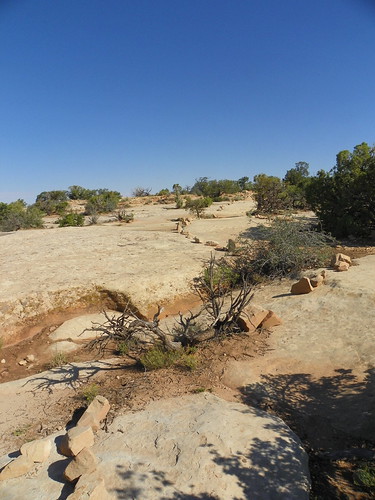
I felt a little like an Indian scout trying to figure out how to get to overlook you could see ahead.
Mummy Cave Overlook:
One of the largest ancestral Puebloan villages in Canyon de Chelly. The east and west alcoves are living and ceremonial rooms. The tower complex was built in the 1280s by people who migrated from Mesa Verde.

While the traditional Navajo name for this ruin is Tseyaa Kini (House Under the Rock) two well preserved mummies were found here in 1880 leading to the popularity of the name Mummy Cave.
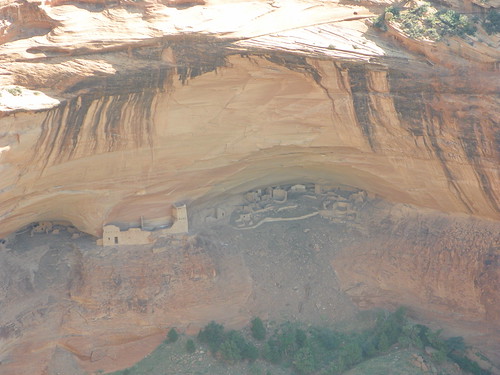
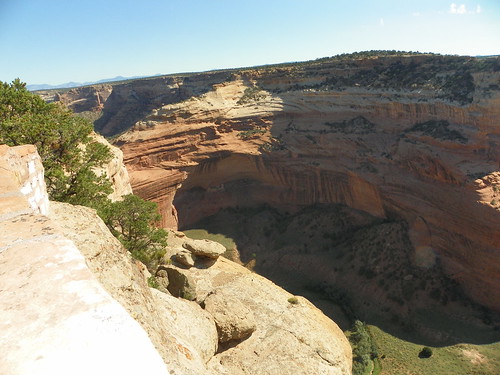
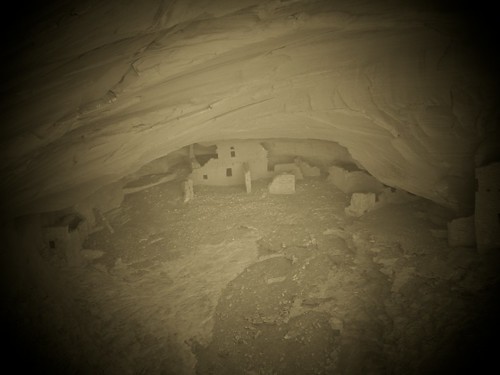
Massacre Cave Overlook:
Navajos were killed here in the winter of 1805 by a Spanish military expedition led by Antonio Narbona. About 115 Navajos took shelter on the edge above the canyon floor. Shots fired from the rim killed all people on the ledge.
(The Spanish claim they killed 90 warriors and 25 women and children, but the Navajo say that the warriors were away hunting and it was mostly women, children and old men that perished.)

Yucca Cave Ruin:
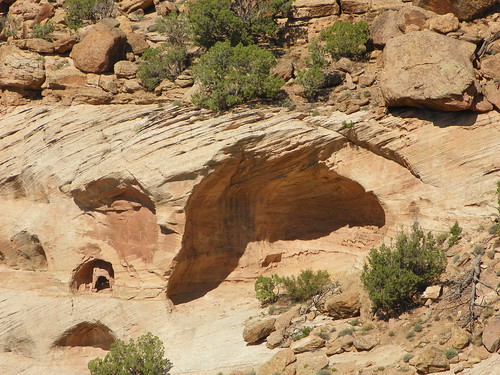
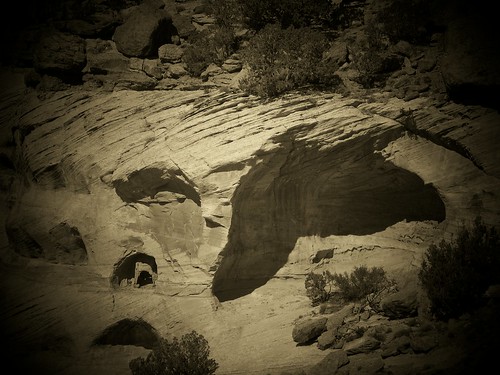

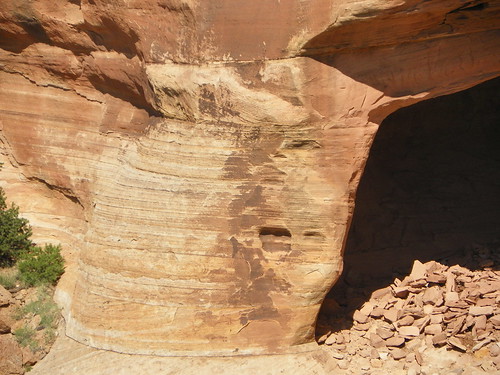
Toe hold trail?
Spider Rock Overlook:
Spider Rock is an 800-foot sandstone spire that rises from the canyon floor at the junction of Canyon de Chelly and Monument Canyon.
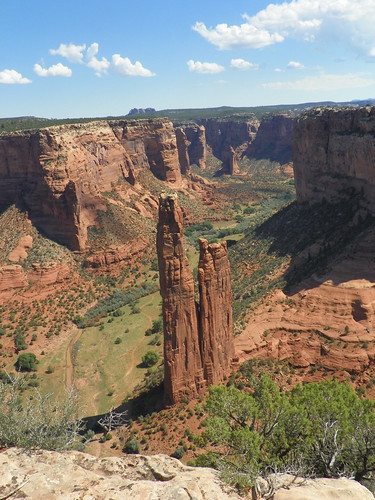
Spider Rock is said to be the home of Spider Woman one of the most important and honored deities of the Navajo. It is said that she helped the warriors find their father, the Sun-god of Rainbow Bridge fame, and taught the women how to weave.
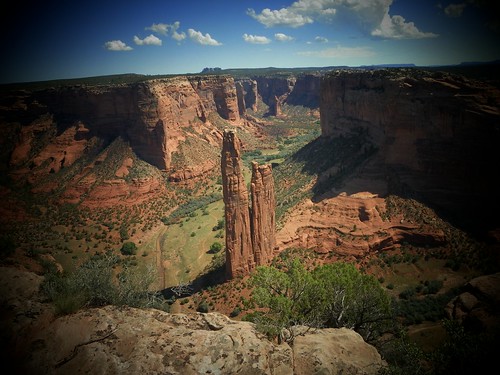
Navajo children are taught that if they misbehave Spider Women will let down her web-ladder and carry them back to Spider Rock and devour them. It is said that the white top of Spider Rock is actually the sun-bleached bones of naughty Navajo children.
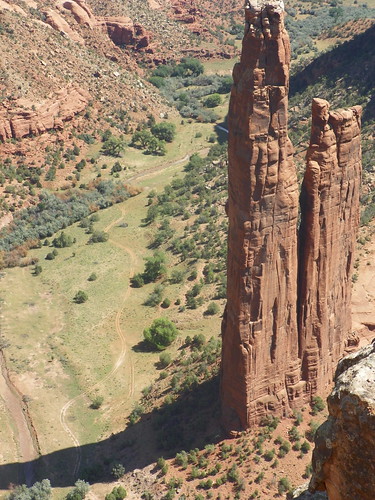
Junction Overlook:
Has views of Chinle Valley and the confluence of Canyon del Muerto and Canyon de Chelly.
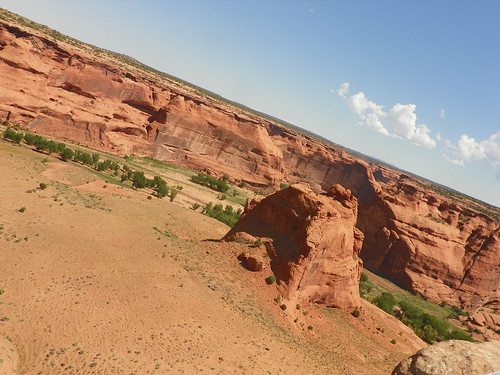
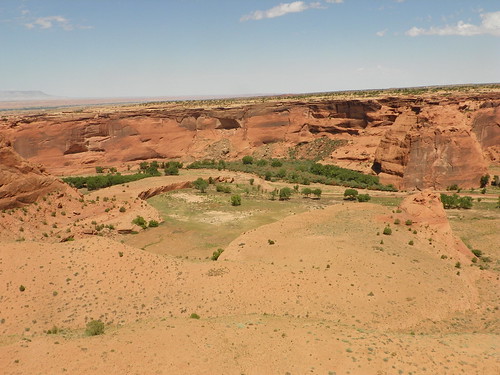
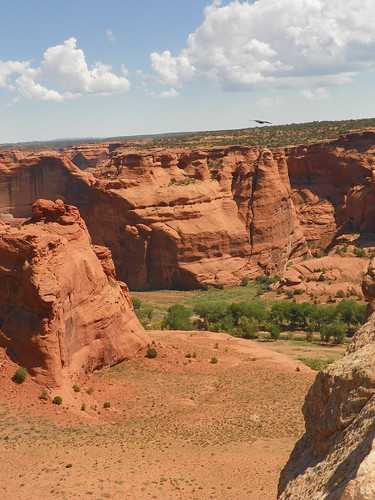
Tseyi Overlook:
Chelly (pronounced Shay) is the Spanish bastardization of Tseyi, Navajo for Rock Canyon. Navajo farms on the canyon floor are still inhabited and produce crops for individual families with little left over for sale.
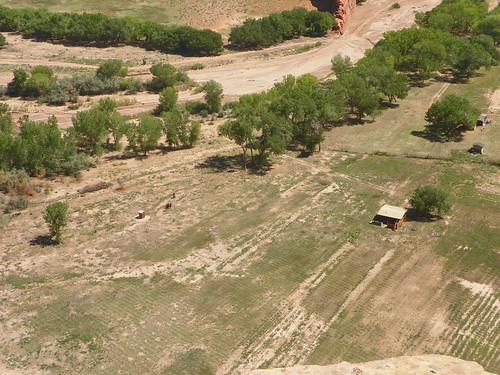
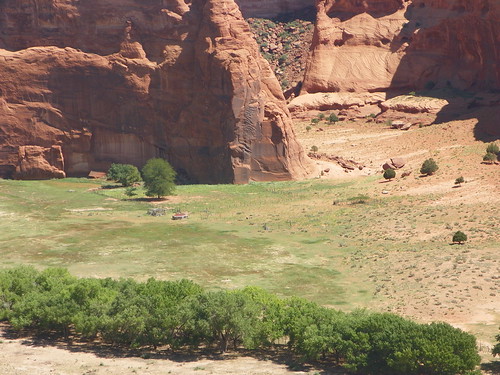
One of the things I didn't like about Canyon de Chelly was the abundance of vendors at every overlook. They also, apparently, have a huge problem with theft in the park and there are a lot of signs cautioning visitors to take all valuables with them and to lock their vehicles. That said, I still may have enjoyed this more had it been near the beginning of the trip instead of the end.